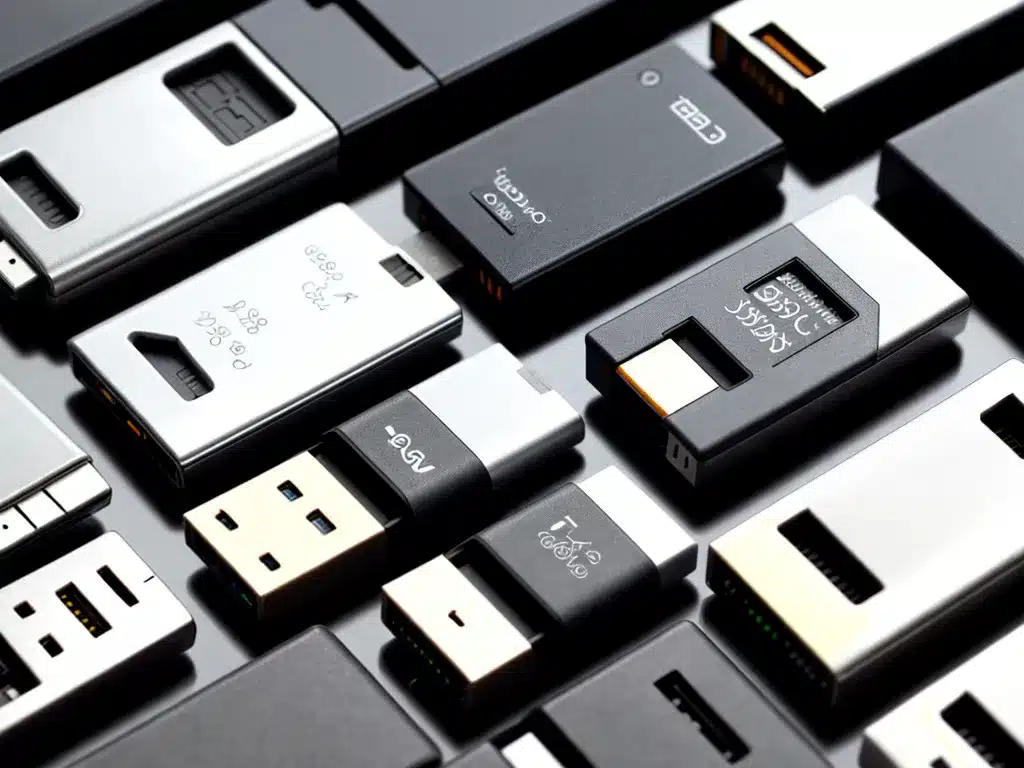
Introduction
I’m in the market for a new USB backup drive to store important files and media. As someone who relies on backups to preserve my data and keep it secure, I want to make sure I choose the right drive for my needs. In this article, I’ll go over the key specifications and features to look for when selecting a USB backup drive.
Storage Capacity
The most fundamental factor to consider is the storage capacity of the backup drive. This determines how much data you can store on the drive. For personal backup needs, I recommend getting a drive with at least 1TB of space. This will provide ample room to store documents, photos, videos, music, and other media files. Some key points on storage capacity:
- Hard drive size is measured in gigabytes (GB) or terabytes (TB). 1TB = 1000GB.
- Bigger drives offer more storage but cost more. 1TB drives range from $50 – $80.
- Consider how much data you need to back up when choosing capacity. Photos, videos and music take up more space.
I am looking at 1TB or 2TB drives to start with. This will allow me to back up my essential files with room to grow.
Transfer Speed
An important specification that affects performance is the data transfer speed. Faster transfer rates allow you to move files on and off the drive more quickly. Key metrics:
- USB interface – USB 3.0 and 3.1 offer faster speeds than USB 2.0. Look for drives with 3.0 or 3.1.
- Read/write speeds – Higher MB/s rates indicate faster transfers. 100+ MB/s read/write speeds are ideal.
USB 3.0/3.1 drives with speeds over 100MB/s will offer the best transfer rates for smooth backups.
Drive Types
There are two main drive types to consider:
-
HDD (hard disk drives) – Use spinning disks to store data. Offer more storage for lower cost. But can be slower and more prone to damage from drops/shocks.
-
SSD (solid state drives) – Use flash memory with no moving parts. Faster than HDDs and more durable, but pricier per GB.
For backups, HDDs should suffice as long as I avoid excessive drops or shocks that could damage the disks. SSDs are better for frequently accessed data and external boot drives.
Durability
Since I plan to transport this drive and use it on the go, durability is important. Key factors:
- Ruggedized design – Some drives are reinforced and shock-resistant. Look for rugged features.
- Dust/water resistance – Protection from the elements (IP54/IP55/IP68 ratings). Useful if using drive outdoors.
- Materials – Metal, silicone, and rubber provide more protection than plastic.
A rugged drive with dust/shock resistance gives me peace of mind when taking it on the go. Data safety is crucial.
Security Features
Data security is a top priority for backups. Here are some useful features:
- Encryption – Hardware or software encryption keeps data protected if drive is lost/stolen.
- Password protection – Adds another layer of security for sensitive files.
- Backup software – Software for automatic/scheduled backups and syncing across devices.
Drives with 256-bit AES hardware encryption give the best security for backup data. Password protection is also ideal for an extra layer of protection.
Brands & Warranty
Reputable brands known for quality drives include:
- Western Digital
- Seagate
- Samsung
- SanDisk
- LaCie
I’ll be sure to stick to well-reviewed major brands. Also important is checking the warranty length. Longer warranties (3-5 years) cover more time in case of drive failure or defects.
Final Thoughts
The most important factors I’ll consider for a backup drive are ample storage capacity, fast transfer speeds, durability, security features, and a long warranty from a reputable brand. By evaluating drives based on these key specifications and features, I can choose a USB backup that reliably stores all my important data and media while fitting within my budget. And with regular backups, I’ll have peace of mind knowing my files are protected.












